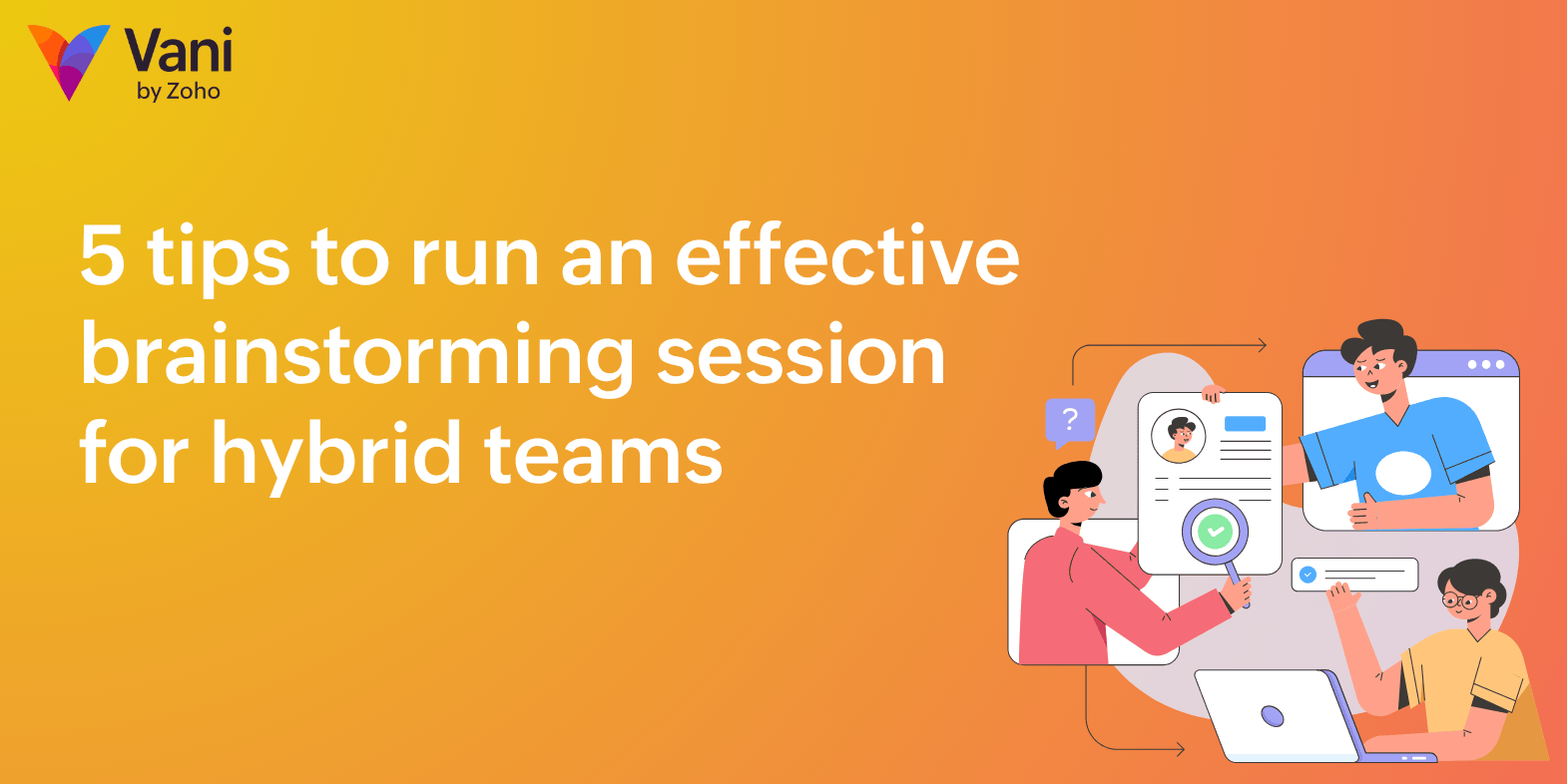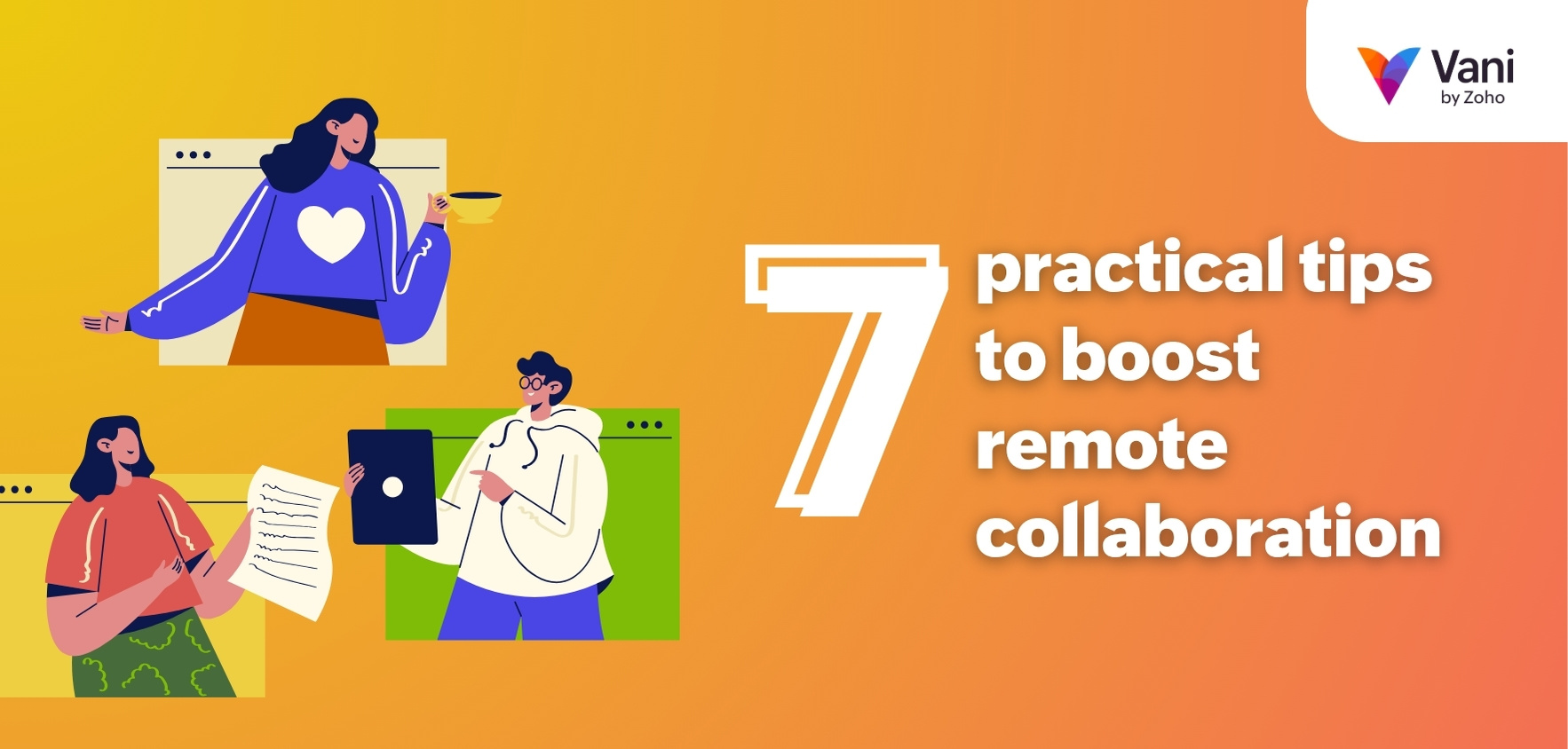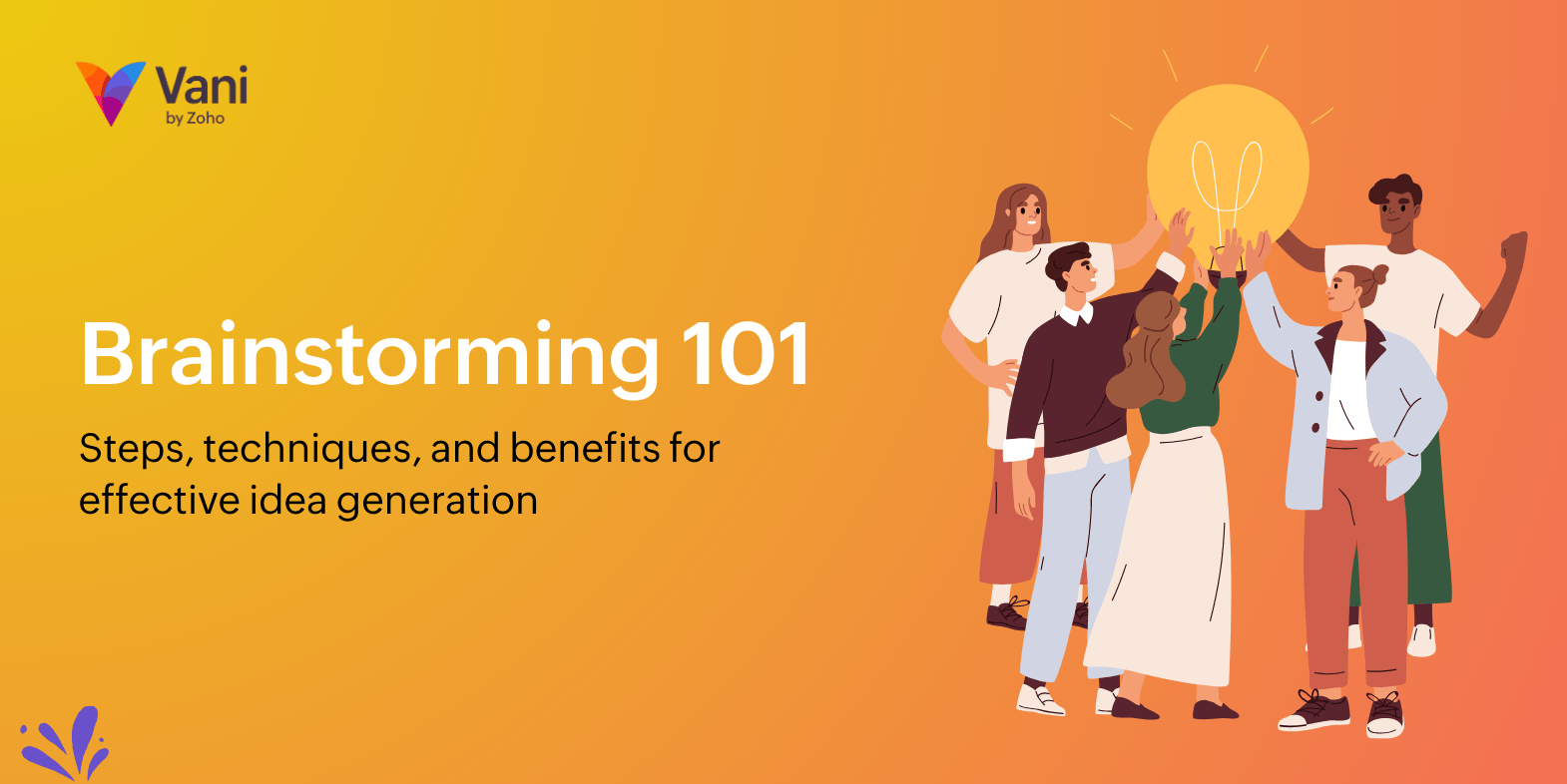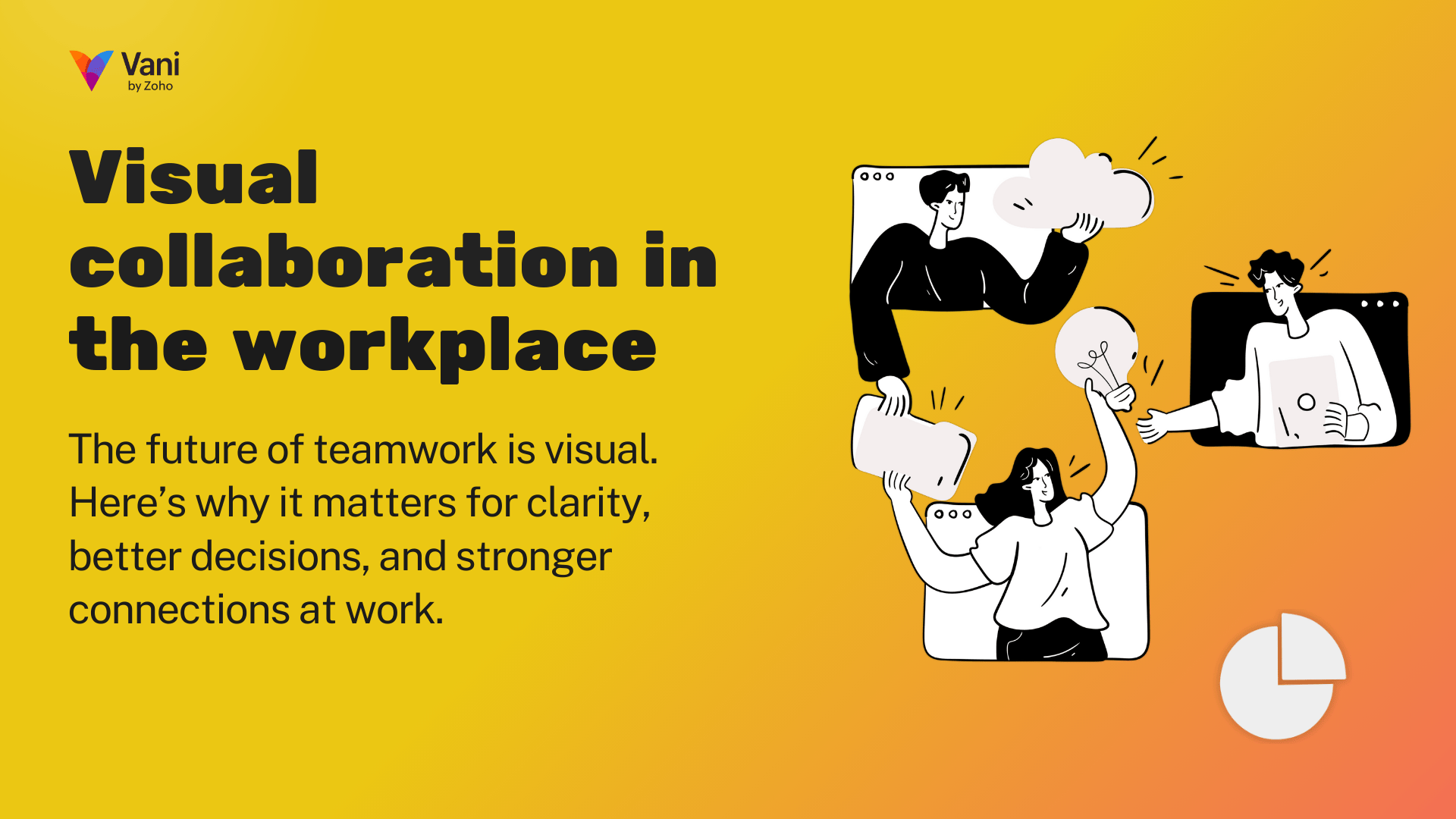- HOME
- Work culture
- 5 tips to run an effective brainstorming session for hybrid teams
5 tips to run an effective brainstorming session for hybrid teams
- Last Updated : September 30, 2025
- 25 Views
- 6 Min Read

Brainstorming is one of the most energizing parts of teamwork. It's the moment when fresh ideas take shape, teammates build on each other’s thoughts, and collaboration sparks new possibilities. But with the rise of hybrid work, the way teams brainstorm has changed.
In a hybrid setup, some people may be in the office while others join remotely. This arrangement brings more diverse perspectives, but it also creates challenges. The energy of sitting together in a room is harder to replicate online, and remote participants often struggle to get the same level of visibility as those in the office. Without a clear structure, hybrid brainstorming can lose its spark and leave people disengaged.
The good news is that with the right approach, hybrid brainstorming can be just as effective—and sometimes even better—than traditional sessions. Here are five practical tips that can help your team brainstorm effectively in a hybrid environment.
1. Prepare the groundwork before the session
Successful brainstorming rarely happens without preparation. In an office setting, participants often warm up with informal conversations before the meeting begins, which helps them settle into the topic. Hybrid teams don't have that advantage. This makes structured preparation more important than ever.
How to prepare effectively
Define the problem clearly: Broad questions like “How do we improve marketing?” are too vague. A sharper focus, such as how to generate campaign ideas that increase signups by 20 percent, gives participants direction.
Share context in advance: Provide background materials—such as customer feedback, data points, or competitor examples—a couple of days before the session. This allows participants to come in with informed ideas.
Choose a digital workspace: Platforms like Vani, Miro, or Mural give both in-office and remote members the ability to contribute.
Set expectations: Let participants know what the session should achieve. For example, “Our goal is to generate 10 new ideas and narrow them down to three that we can refine further.”
Example
A product team trying to improve its onboarding process shared a one-page document outlining user complaints and current pain points before their brainstorming session. When the meeting started, the team could skip over explanations and jump straight into idea generation.
Key takeaway: Preparation ensures everyone starts with the same level of context and allows the session to focus on solutions rather than background explanations.
2. Create a level playing field for participation
In hybrid sessions, those physically present often dominate the conversation. Remote colleagues may hesitate to speak up, or their contributions might get overlooked. This imbalance can weaken the quality of the discussion and cause frustration.
How to keep participation fair
Adopt a remote-first mindset: Even if some members are sitting in the same room, ask everyone to log in to the shared board from their own device. This makes contributions visible and equal.
Use silent idea generation: Give participants a few minutes at the start to write down their thoughts before open discussion begins. This gives quieter voices the opportunity to contribute.
Structured turns: Invite input from each participant instead of relying on volunteers. This reduces the chances of a few people dominating the conversation.
Rotate facilitators: Changing who leads the session brings fresh perspectives and prevents the same approach from being repeated every time.
Example
In a strategy workshop, the facilitator began by asking everyone to enter their ideas on the shared board silently. Remote members typed their contributions online, and those in the office did the same from their laptops. Only after this initial step did the open conversation begin. This ensured that every participant’s input was captured before group discussion.
Key takeaway: Equal participation requires deliberate effort. Without structure, hybrid brainstorming will lean toward in-person voices and exclude valuable remote perspectives.
3. Blend synchronous and asynchronous brainstorming
Not every participant generates their best ideas in the middle of a live conversation. Some think better after reflection, while others excel during spontaneous exchanges. In addition, hybrid teams often work across time zones, making it difficult to get everyone together at the same time. A combination of synchronous and asynchronous brainstorming helps balance these differences.
How to combine the two
Before the session: Open the digital workspace a few days ahead. This gives participants time to reflect and add initial ideas.
During the session: Focus live time on refining, grouping, and building on ideas rather than starting from scratch.
After the session: Keep the board open for a few days. This allows people to revisit their thoughts and add new insights that may come later.
Example
A global marketing team with members in the United States, Europe, and Asia opened their brainstorming board three days before the live meeting. By the time they gathered, dozens of ideas were already listed. Instead of spending time starting from zero, the team used the meeting to cluster related thoughts and decide on priorities.
Key takeaway: Combining live collaboration with flexible contributions ensures everyone has a chance to contribute, regardless of time zone or work style.
4. Use visual collaboration to unlock creativity
Brainstorming is not only about talking. Visual elements help participants spot patterns, make connections, and stay engaged. For hybrid teams, digital tools provide a shared space where everyone can participate equally.
Practical approaches
Create mind maps to expand ideas from a central theme.
Use affinity diagrams to group related concepts.
Try color coding to mark priorities or categories.
Make simple sketches or diagrams to encourage new ways of thinking.
Example
An HR team working on employee engagement strategies used a digital board where participants grouped sticky notes into categories such as recognition, work-life balance, and growth opportunities. Once the themes were visible, gaps in the team’s approach became obvious, and the discussion moved toward addressing those areas.
Key takeaway: Visualizing ideas brings clarity and transforms abstract discussions into actionable insights.
5. End with action and follow-up
Many brainstorming sessions lose momentum when they end without a clear outcome. Participants may leave with enthusiasm, but, without direction, ideas fade quickly. Hybrid teams, spread across multiple locations, especially need clarity and accountability to stay aligned.
How to make it actionable
Cluster ideas to simplify the list and remove duplicates.
Prioritize the most promising directions using votes or scores.
Assign responsibility so each idea has an owner.
Share a recap within 24 hours to ensure nothing is lost.
Plan follow-up check-ins to track progress and maintain momentum.
Example
At the end of a product brainstorming session, the facilitator grouped all ideas into themes and held a quick voting round. The top three were assigned to specific team members. Everyone left knowing what to focus on and when progress would be reviewed.
Key takeaway: Brainstorming has real value only when it leads to action. Clear ownership and timely follow-up ensure ideas turn into results.
Common pitfalls to avoid
Remote participants losing engagement: Keep the session interactive and prompt people directly.
Scheduling difficulties across time zones: Rotate meeting times and encourage asynchronous contributions.
A few dominant voices: Begin with silent input and structured turns.
Too many ideas without focus: Always cluster and prioritize before ending.
Technical disruptions: Test tools in advance and have a backup ready.
Beyond the tips: Building a culture of creativity
These techniques can improve individual brainstorming sessions, but the bigger opportunity lies in creating a culture where creativity is part of daily work. Hybrid teams thrive when leaders encourage inclusivity, recognize contributions, and ensure that ideas move forward.
When team members see their ideas taken seriously, they feel valued and are more motivated to contribute again. Digital workspaces can also become a central hub for ongoing creativity, helping teams build on ideas between meetings and bridging the gap between remote and in-office members.
Closing thoughts
Hybrid work has reshaped collaboration, and brainstorming needs to adapt with it. With proper preparation, balanced participation, a mix of synchronous and asynchronous input, visual collaboration, and clear follow-up, hybrid brainstorming can be just as effective as traditional in-person sessions.
At its best, brainstorming is about more than generating ideas. It creates energy, builds ownership, and moves teams forward together. With the right approach, every participant feels included, and every idea gets a fair chance to grow.



